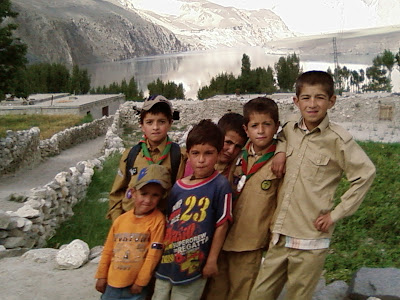By: Shamsuddin Muhammad
Inhabitants of Gilgit-Baltistan are living currently in a volatile times straddling with the natural catastrophes and dilemmas making them more alert to nurtured potential to survive in this comparatively backward region bordering China on the extreme North of the country. How do well these communities affected by such natural disasters either directly or indirectly do transform challenges into opportunities depends on better mutual understanding, unity, fraternity, patience, tolerance, forgiveness for mistakes,respecting cultural, ethnic and religious diversity, ensuring equity, eradicating communication gaps, bridging the gap not only among the indigenous communities but also with those affected across the country and any where on the planet of earth. In this connection, such a situation demands largely for petential capacity to take right decisions on right time and ensure their implementation on time in Public sector and to bolster development initiatives to increase standard of living of poor mountain communities of Gilgit-Baltistan.  HUSANI, Gojal: A file photo taken in end of September, 2010. Blockade water under the soft terraces a offers a huge threat to settlement above.
HUSANI, Gojal: A file photo taken in end of September, 2010. Blockade water under the soft terraces a offers a huge threat to settlement above. Given the current deplomatic war, a new form of cold war, between rapidly growing Chinese economy and India under the aeges of USA to check the former's possible overtaking as the only super power has also affected the inteligentsia of the Gilgit-Baltistan region. US and Indian media circles and prominent writers have focused their attention on an expected new great game to be played in this region that borders Pakistan not only three strategic states: India, China and Afghanistan but also a corridor to the Central Asian states namely Tajikistan, Turkmenistan and so on. Keeping in view, future possible commercial hub at the junction of three great mountain ranges, the tug of war among these powers did little good for the interest of local population. The regional diaspora through regional media and especially bloggers continue to inform masses about the developments on global front has shifted their focus largely from the local issues rose gradually.
 Husani Astana: Internal picture of Husani Astana (Shrine) built centuries ago is situated above the stalled Hunza river. Photo by Shams
Husani Astana: Internal picture of Husani Astana (Shrine) built centuries ago is situated above the stalled Hunza river. Photo by ShamsSuch a case is with Husani, a town around three kilometers away from tehsil headquarter with everlasting beauty, spiritual reverence and its strategic location. The town that is home to one of the popular shrine with a population more than one thousand is at the foot hills of Husani Glacier and Boreth lake in Gojal, Upper Hunza. The population of this area like other vicinities of Gojal are known for their hospitality; land is fertile for potato crops and fresh fruits and summer season remains pleasant almost for five months.
 Husani, Gojal: The community in Husani village lives in hard times as it has been remained cut- off from Gulmit, the tehsil headquarter and Central Hunza. Yet where the community faces difficulties due to blockade, the small settlement embraces the benefit of land port to facilitate China-Pakistan trade via boats. Shaheen Scouts of Shia Imami Ismaili Boys scouts of the locality poses for Readers Time after their training titled Parvaz three camping.
Husani, Gojal: The community in Husani village lives in hard times as it has been remained cut- off from Gulmit, the tehsil headquarter and Central Hunza. Yet where the community faces difficulties due to blockade, the small settlement embraces the benefit of land port to facilitate China-Pakistan trade via boats. Shaheen Scouts of Shia Imami Ismaili Boys scouts of the locality poses for Readers Time after their training titled Parvaz three camping.This areas is facing currently threat of land failure due to blockade of water that stretches more than 23 kilometers turned Husani village into another peninsula. Moisture land base at the lower parts especially along the river side reveals impending peril if the concerned authorities of Pakistan with the help of China does not manage to avert the land failure by using advance technology to ensure more out flow from the barrier. According to locals, the crop production this year is around 30 percent lower than the last month while the quality of fresh fruit too affected due to change in climatic conditions in the area.
Where the inhabitants faces challenges in terms of troubles in traveling due to suspension of land link with the rest of the area towards Gulmit and Central Hunza, the small settlement has been turned into a major port to facilitate Sino-Pakistan trade via small boats to Attaabad spill way. Such a development is expected to create economic opportunities to local population to earn from. Government can work in this sector to develop warehouses and forwarding companies and help create a trade friendly conducive environment for traders from Pakistan and China.
This area that once greeting to tourists and the visitors to Shrine portrays a mix feelings of beauty and harrow-an agent to enable indigenous population to retain sustainability even in critical times.
The writer is a freelance researcher, writer and editor of Weekly VoH, GB Echo, Al-Shams bimonthly and Readers Time blogs. He can be contacted at:jaashams@gmail.com



No comments:
Post a Comment